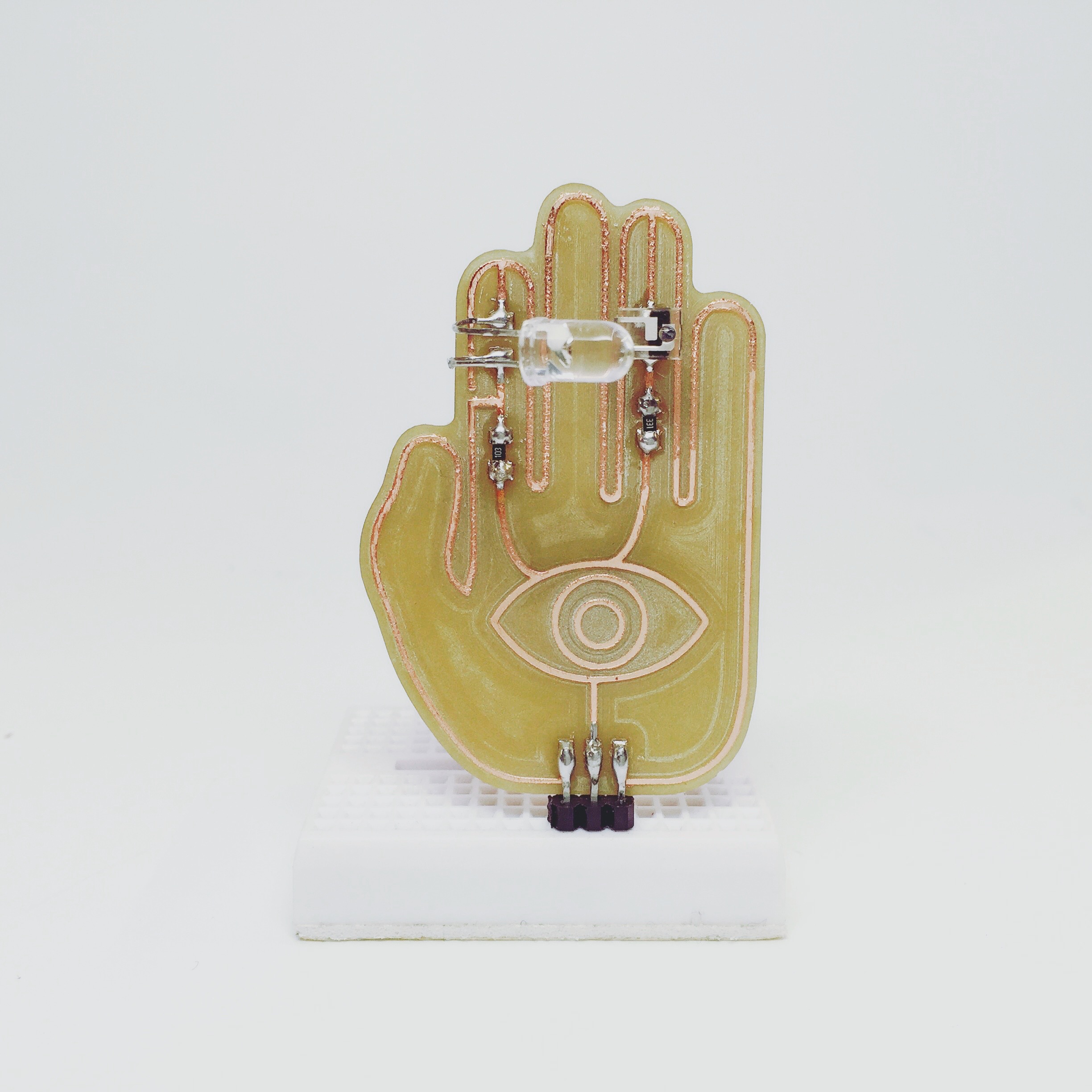Embedded Aesthetics
In my first semester at MIT, I learned how to design and custom mill circuit boards with embedded programming. While learning how to engineer these circuits, I became interested in embedding a symbolic layer of design to the PCB in addition to its electronic functions. This was an intriguing exercise in layering semiotics, as electronics and logic gates have their own symbolic language.
As I learned to mill my own circuit boards, I started making circuits with many custom designs. One is a portrait of my professor that winks when you touch the "FABrication" part of his brain. Another is a valve control board for fluidics that has design allusions to a heart. Another board is designed to detect your pulse through through your finger, and is illustrated by an eye sensing through a hand.
This set of circuits were part of a course called How to Make (Almost) Anything. You can look at the rest of the work I made in that class here.






The following images are more examples of circuits designed with embedded aesthetics. One is a valve control board for fluidics that has design allusions to a heart. Another board is designed to detect your pulse through through your finger, and is illustrated by an eye sensing through a hand.
Below is a video of one of the valve controllers in action:
Embedded Aesthetics
CNC milled copper boards, electronic components: ATtiny44, resistors, capacitors, diodes, LEDs
dimensions variable, 2"x2" to 10" x 10"





